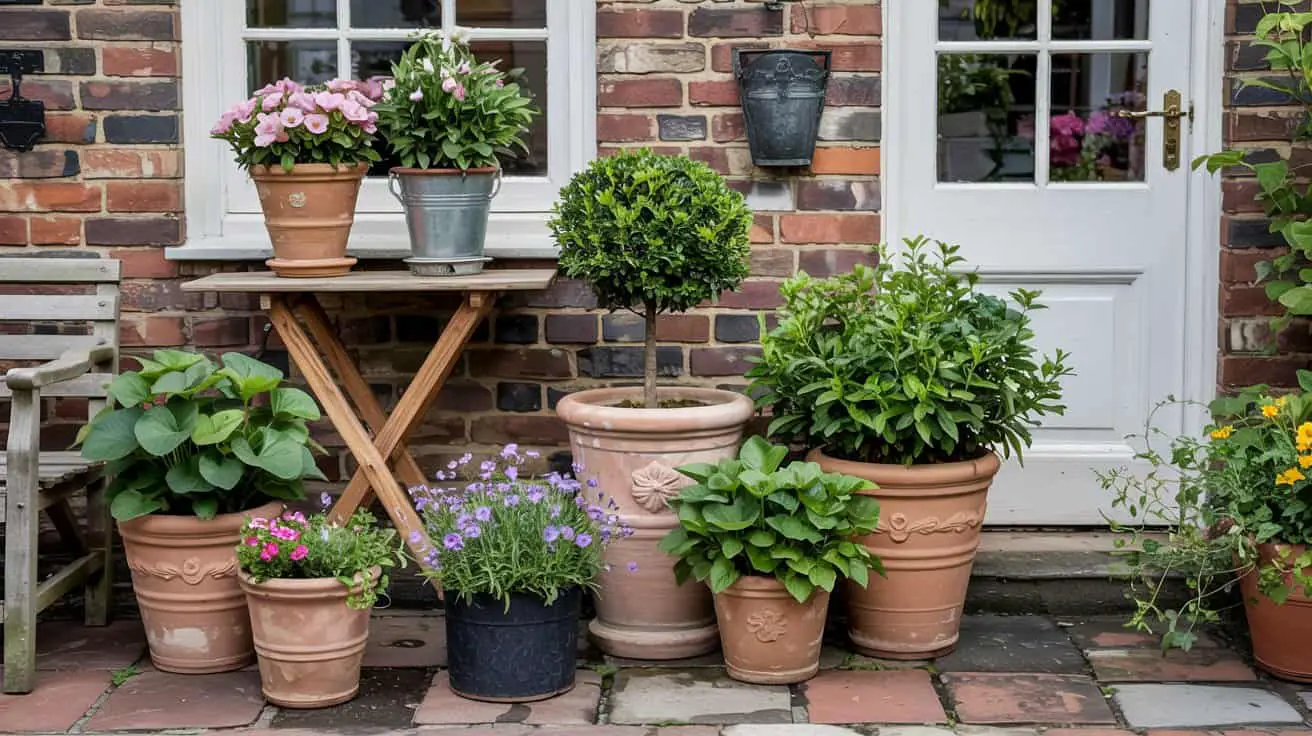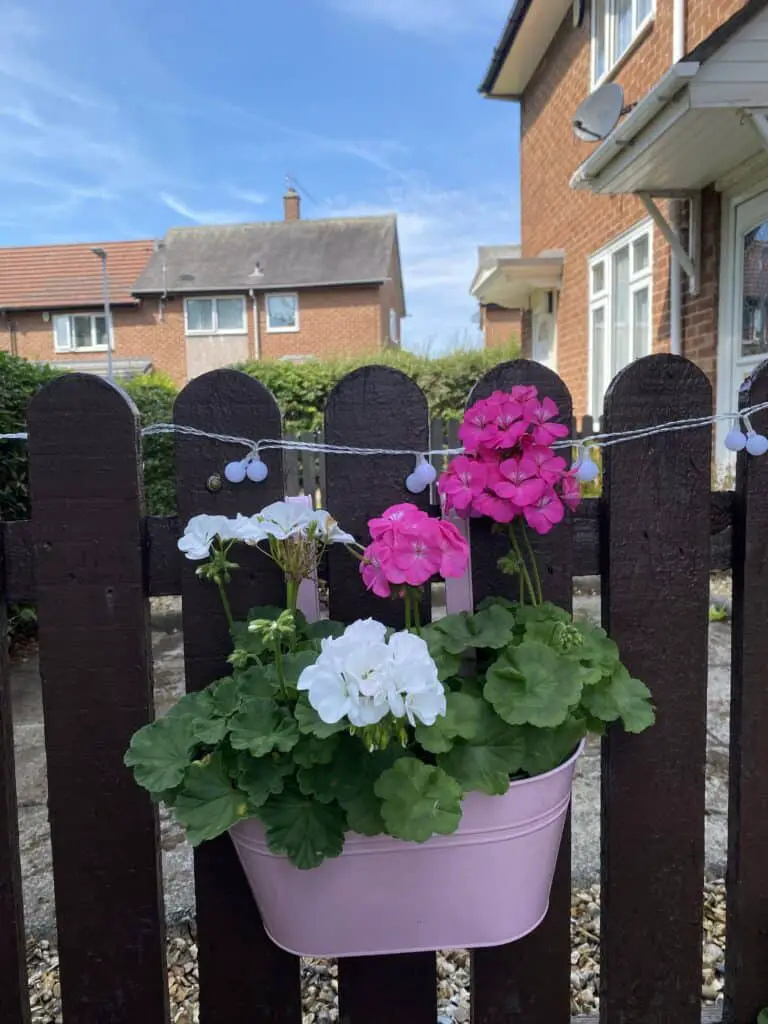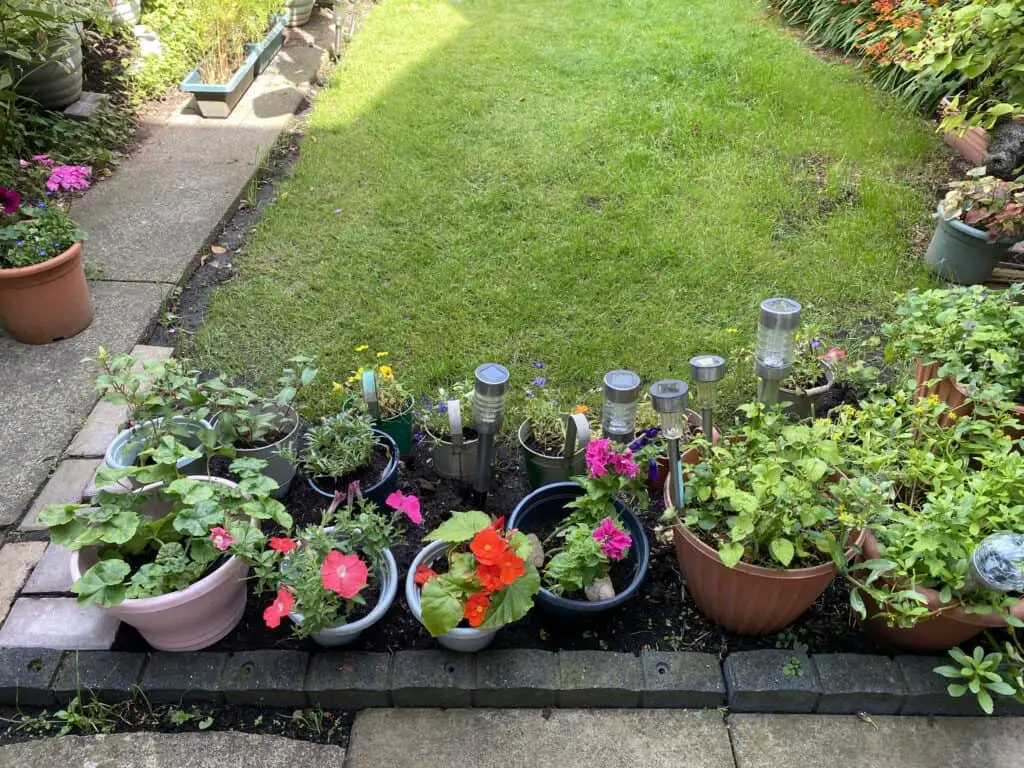
An English garden is all about charm — winding paths, bursts of colour, and plants that feel like they’ve been there for years. Adding potted plants is a simple way to bring even more texture and personality into your space, whether you’ve got a sprawling country garden or a small courtyard.
From pots that hang from fences and tree branches to those arranged neatly on patios or tucked into soil beds, potted plants can fit into any corner. They’re flexible, easy to change with the seasons, and perfect for creating the layered, informal look of a classic English style garden.
1. Hanging Pots on Garden Fences

One of the quickest ways to bring colour to your garden is to use pots with built-in hooks that hang from your fence panels. Fill them with trailing plants, scented geraniums, or classic potted flowers for the patio like petunias and pansies.
In a cottage garden aesthetic, mixing different pot shapes and colours adds a charming, slightly mismatched look. For something more formal, choose classic terracotta or painted metal to suit the English garden aesthetic. Hanging pots are perfect for small gardens too, as they don’t take up precious floor space but still give you plenty of greenery.
2. Pots Hanging from Tree Branches

For a more whimsical, slightly unexpected touch, hang pots from the lower branches of sturdy trees. This works beautifully in English country gardens and French country garden styles, where layered planting creates a sense of discovery.
Choose lightweight planters with secure hooks or ropes, and fill them with plants that can handle a bit of shade, like fuchsias, trailing ivy, or begonias. Hanging pots in trees creates natural “pockets” of interest and helps draw the eye upwards, adding depth to your English garden backyard.
3. Pots in Soil Beds Around the Garden

Tucking potted plants into your flower beds is a clever way to add height, variety, and seasonal interest without replanting every year. Use them to fill bare spots, add a burst of seasonal colour, or showcase special plants like topiary or a dish garden arrangement.
In a small English garden, this trick is especially useful — you can swap out pots as the seasons change, moving spring bulbs in and bringing in autumn foliage later in the year. Nestling pots among perennials also gives your English cottage garden a natural, lived-in look.
4. Pots on Patio Paving

Your patio or terrace is the perfect stage for classic garden outdoor pots and planters. Arrange them in clusters of different heights for a relaxed feel, or in symmetrical pairs for a more formal look.
Go for fragrant herbs like lavender and rosemary near seating areas, or colourful blooms for a welcoming touch — just like front porch flower pots but in your garden. Large terracotta planters or stone urns work beautifully in English country gardens, while painted metal containers suit a more modern English garden aesthetic.
5. Mix and Match for the Full Effect

The beauty of potted plants in an English garden is that you don’t have to choose just one method. Combine fence-hung pots with patio clusters, tucked-in bed planters, and a few hanging from tree branches to create layers of interest.
Play with plant types too — cottage favourites like roses and foxgloves, lush ferns for shaded corners, and even small fruit trees in large pots. The mix of outdoor plant ideas will make your garden feel abundant, personal, and full of seasonal life.
Final Thoughts
Adding potted plants to your English style garden is as much about creativity as it is about practicality. They let you experiment with colour, texture, and placement without committing to permanent changes. Whether you’re working with a grand English country garden or a cosy courtyard, a few well-placed pots can make the whole space feel more alive and welcoming — all year round.
